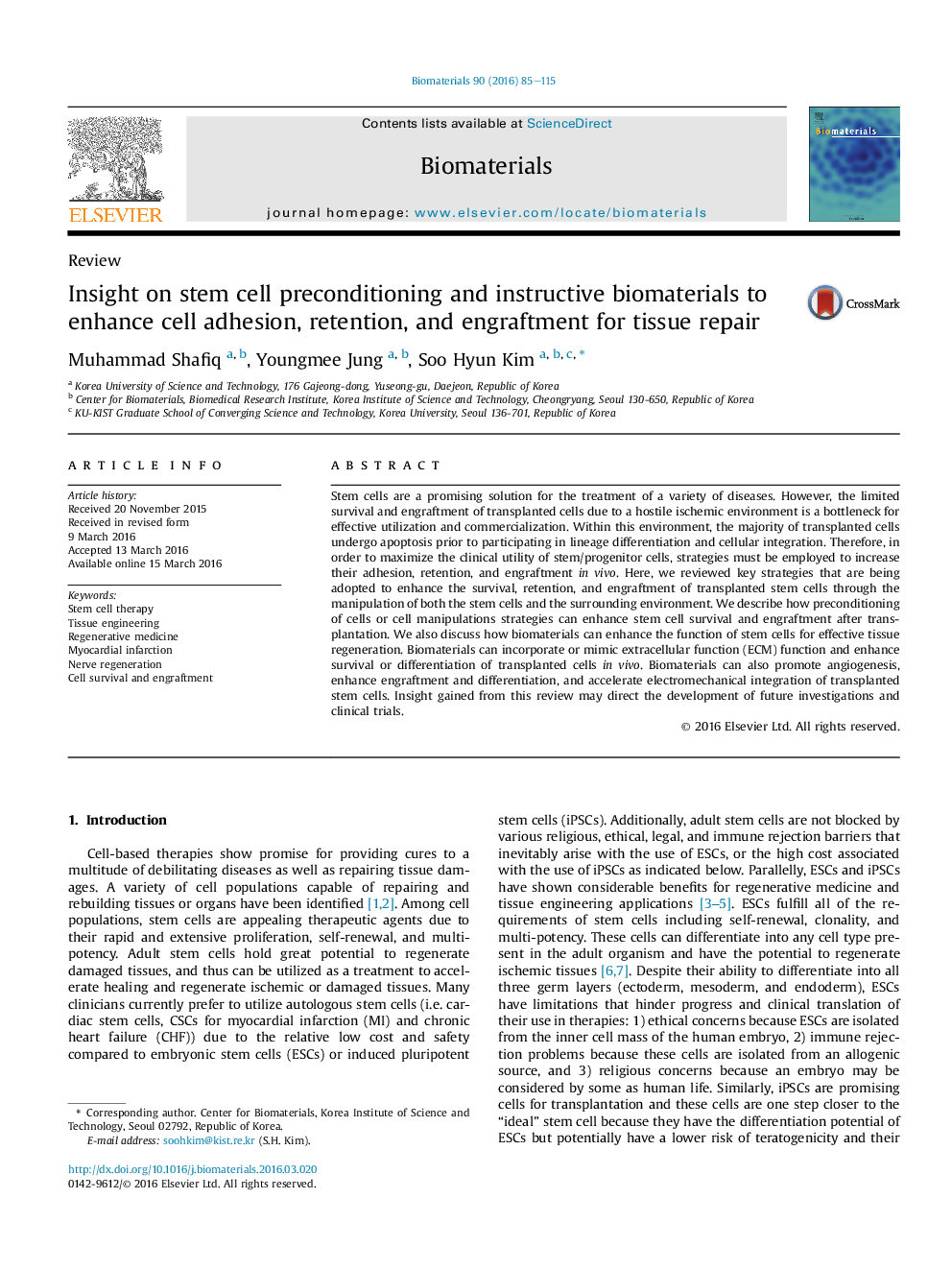| Article ID | Journal | Published Year | Pages | File Type |
|---|---|---|---|---|
| 5387 | Biomaterials | 2016 | 31 Pages |
Stem cells are a promising solution for the treatment of a variety of diseases. However, the limited survival and engraftment of transplanted cells due to a hostile ischemic environment is a bottleneck for effective utilization and commercialization. Within this environment, the majority of transplanted cells undergo apoptosis prior to participating in lineage differentiation and cellular integration. Therefore, in order to maximize the clinical utility of stem/progenitor cells, strategies must be employed to increase their adhesion, retention, and engraftment in vivo. Here, we reviewed key strategies that are being adopted to enhance the survival, retention, and engraftment of transplanted stem cells through the manipulation of both the stem cells and the surrounding environment. We describe how preconditioning of cells or cell manipulations strategies can enhance stem cell survival and engraftment after transplantation. We also discuss how biomaterials can enhance the function of stem cells for effective tissue regeneration. Biomaterials can incorporate or mimic extracellular function (ECM) function and enhance survival or differentiation of transplanted cells in vivo. Biomaterials can also promote angiogenesis, enhance engraftment and differentiation, and accelerate electromechanical integration of transplanted stem cells. Insight gained from this review may direct the development of future investigations and clinical trials.
